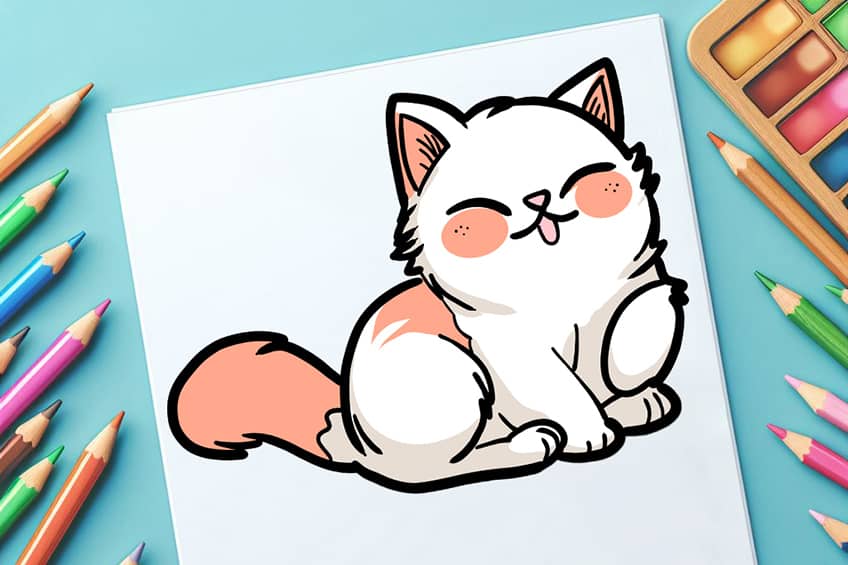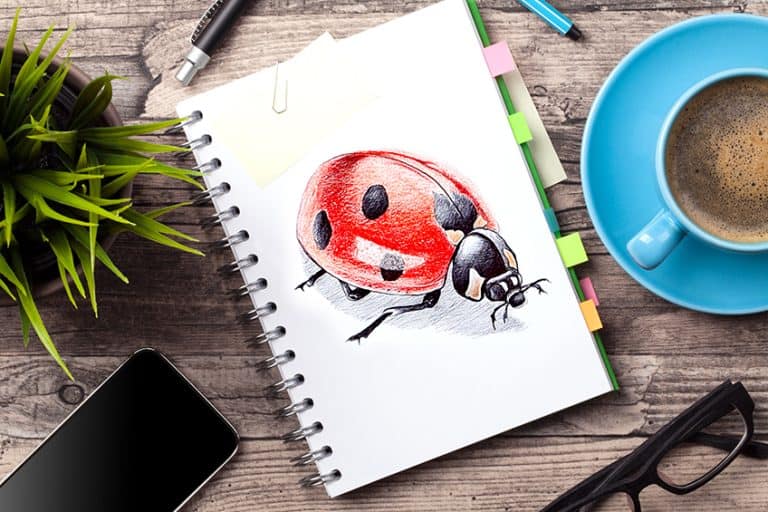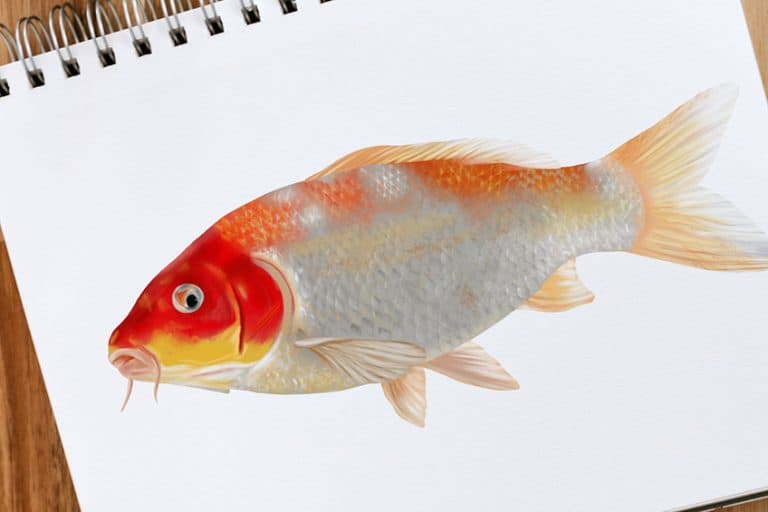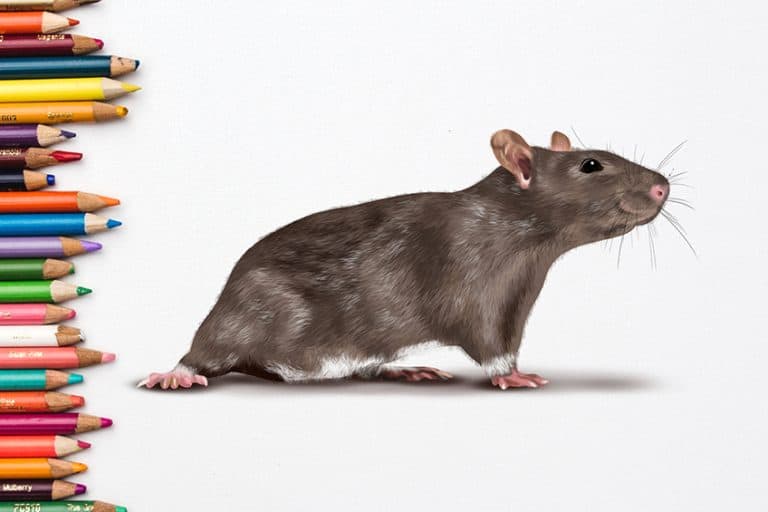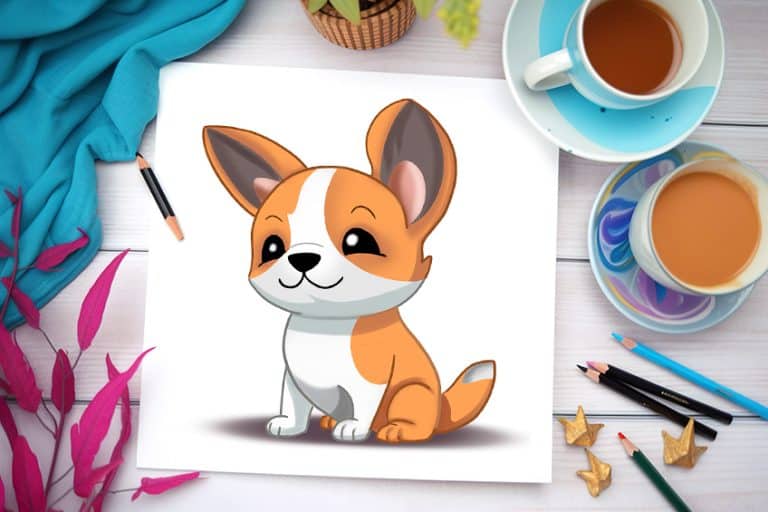How to Draw a Kitten – Sketching Tips for Feline Art
Drawing a kitten involves a process that can be broken down into 12 steps, making it accessible for artists of all skill levels. From sketching the basic shape to adding the final touches, each step builds upon the last to help you create a lifelike and adorable kitten. Whether you’re a beginner looking to learn the basics or an experienced artist refining your skills, these steps offer a structured approach to capturing the charm and playfulness of a kitten on paper. Follow along, and by the end, you’ll have a drawing that brings the playful spirit of a kitten to life.
Table of Contents
- 1 Purr-fect Sketching: Step-by-Step Guide to Drawing a Kitten
- 1.1 Step 1: Begin to Draw the Head of Your Kitten Sketch
- 1.2 Step 2: Start to Draw the Main Body
- 1.3 Step 3: Draw the Legs and Ears on Your Kitten Drawing
- 1.4 Step 4: Add the Facial Guidelines
- 1.5 Step 5: Outline Your Kitten Sketch
- 1.6 Step 6: Continue to Outline the Fur On Your Kitten Drawing
- 1.7 Step 7: Draw the Facial Features
- 1.8 Step 8: Add Detail to the Ears and Paws
- 1.9 Step 9: Start to Color Your kitten Drawing
- 1.10 Step 10: Continue Coloring In
- 1.11 Step 11: Add a Ground Shadow
- 1.12 Step 12: Finalize Your Kitten Sketch
- 2 Frequently Asked Questions
Purr-fect Sketching: Step-by-Step Guide to Drawing a Kitten
This collage is a visual guide, illustrating every step toward the finished drawing. By adhering to this sequence, you’ll effectively learn the technique of how to draw a kitten!
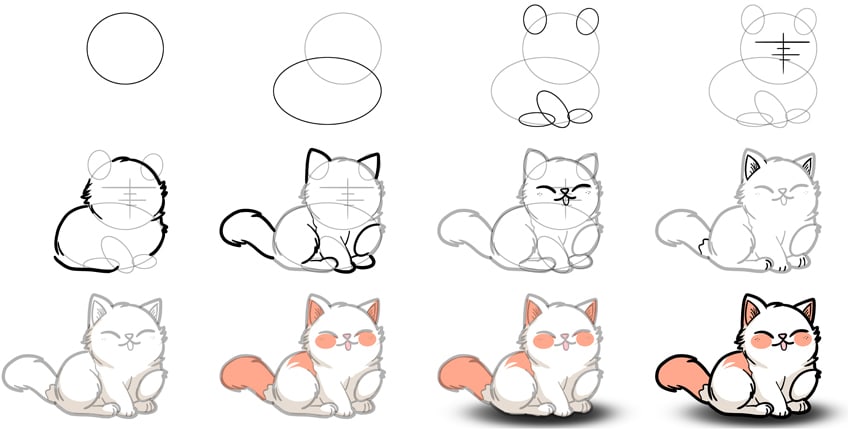
Step 1: Begin to Draw the Head of Your Kitten Sketch
Begin our tutorial on how to draw a kitten, finding the center of your drawing space. Just to the right of this central point, sketch a circle to symbolize the head.

Step 2: Start to Draw the Main Body
Begin this step by drawing an oval shape beneath the head to represent the main body of the kitten.

Step 3: Draw the Legs and Ears on Your Kitten Drawing
Start with sketching a vertical oval on each end of the head to illustrate the ears, making sure they overlap slightly. Then, proceed to draw the legs by creating two ovals that lie horizontally and another oval at an angle, each varying slightly in size to complete the step.

Step 4: Add the Facial Guidelines
Within the center area of the face, draw a single vertical center line and four horizontal guidelines.
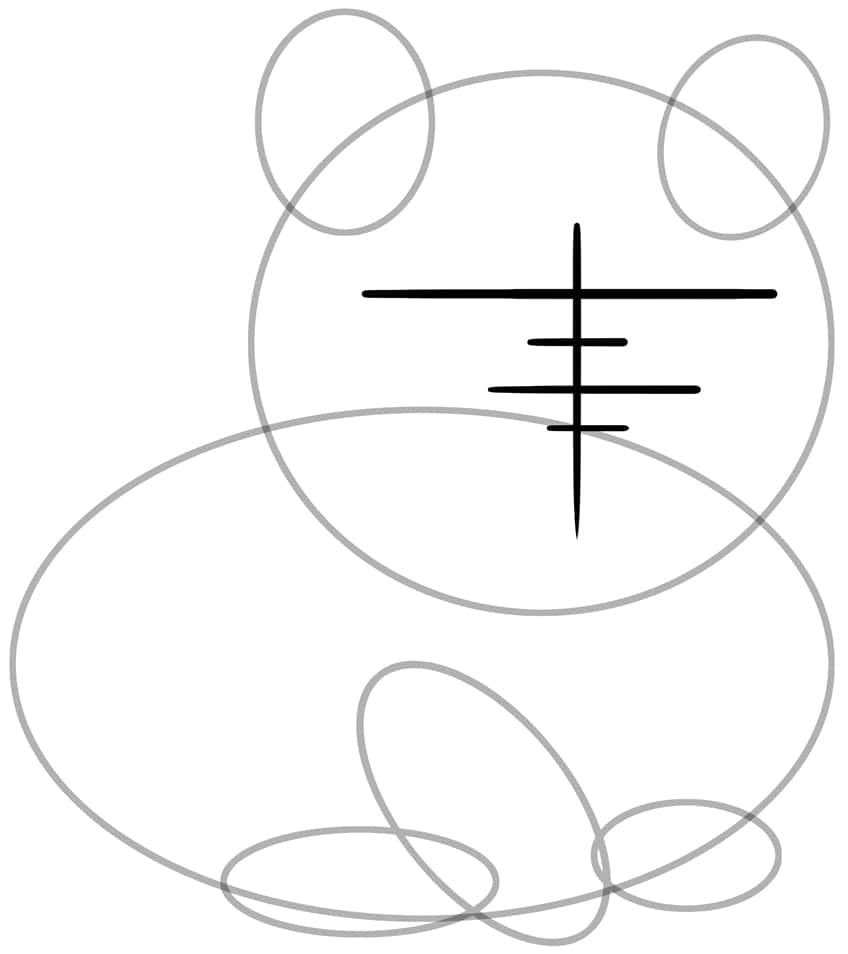
Step 5: Outline Your Kitten Sketch
Using your construction lines as a guide, begin tracing the somewhat furry outline of the kitten.

Step 6: Continue to Outline the Fur On Your Kitten Drawing
In this step, continue to outline the kitten’s ears. Then, proceed to trace the outlines of the kitten’s tail, legs, and paws.
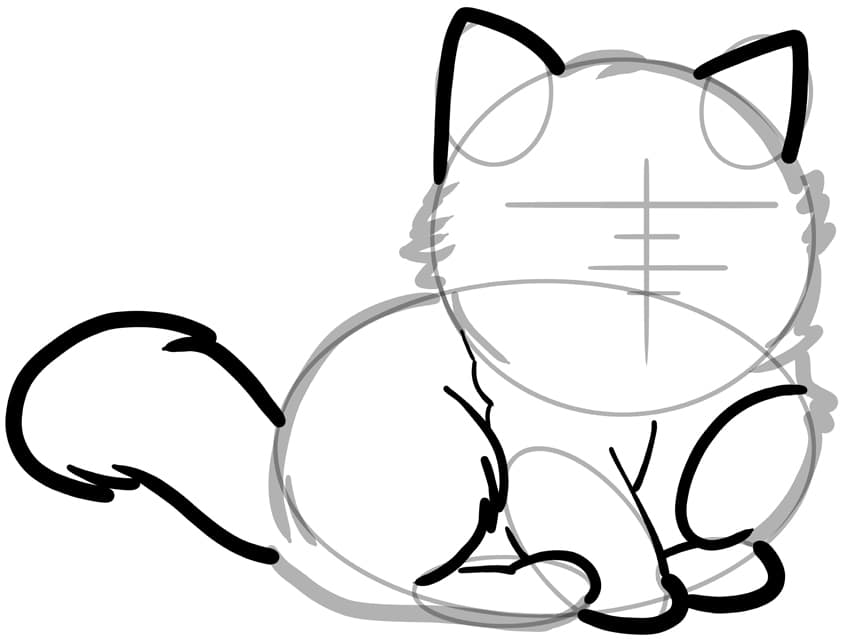
Step 7: Draw the Facial Features
Start by following the guidelines to sketch the eyes, nose, and mouth. Attach the tongue to the line of the mouth. Below each eye, add four spots. After finishing, erase any visible construction lines that remain.

Step 8: Add Detail to the Ears and Paws
Within each ear, draw a secondary outline and the inner fur lines. Continue by drawing the lines on each paw and finally, complete the tail by drawing a small pattern.

Step 9: Start to Color Your kitten Drawing
Use a fine, sharp brush and light tan paint to color the edges and lower areas of the kitten.

Step 10: Continue Coloring In
Use the same brush as previously and a shade of salmon orange paint, and evenly coat the tail, back, ears, and cheeks. Switch to pink paint and color the nose and tongue.

Step 11: Add a Ground Shadow
With black paint and a fine, sharp brush, add shading beneath the kitten. Then, employ a blending brush to diffuse and soften the shading.

Step 12: Finalize Your Kitten Sketch
Utilize a fine, sharp brush dipped in black paint to carefully trace the outlines and add texture and detail lines inside the kitten. This is the final step, and with it, you have completed our tutorial on how to draw a kitten!

Warm congratulations, emerging artist! As you glance up from the charming depiction of a kitten on your canvas, let the sense of accomplishment wash over you. You’ve transformed from a learner to a master artist, masterfully rendering the kitten’s delightful features with strokes full of inspiration. This depiction of a kitten, animated by your creative touch, now sparkles with gentle shades and fine details. Hold onto this moment, for it’s more than a mere illustration; it’s a voyage of personal discovery through the art world. Your drawing of the kitten serves not just as a portrayal of cuteness; it’s a reflection of your perseverance and the limitless power of your creative spirit!
Frequently Asked Questions
How Can I Add Realistic Fur Texture to My Kitten Drawing?
Adding realistic fur texture to kitten drawings is a delightful challenge that I’ve explored in my own art. I find that starting with a light, initial sketch of the kitten’s body shape and fur direction is crucial. Then, using a range of pencils from light to dark, I create layers of fur strokes that follow the contour of the kitten’s body. Paying attention to the direction and length of these strokes is key to achieving a lifelike texture. Don’t be afraid to vary the pressure on your pencil to create lighter and darker areas, mimicking the shadows and highlights in the fur. Additionally, adding some stray hairs and fur tufts around the ears and paws can enhance the realism. It’s all about patience and attention to detail to make your kitten drawings come alive with fluffy fur.
What Are Some Creative Ideas for Giving Personality to My Kitten Sketch?
Infusing personality into kitten drawings is where the fun begins. I often start by considering the pose and expression of the kitten. Depending on the mood I want to convey, I might draw a playful kitten pouncing on a toy with wide, curious eyes, or a sleepy kitten curled up with a contented smile. Tailoring the facial features, such as the shape of the eyes and the position of the ears, can also make a big difference. Don’t hesitate to experiment with various accessories or props to tell a story through your kitten’s appearance. Whether it’s a tiny bowtie, a toy mouse, or a mischievous glint in the eyes, these details can bring out the unique personality of your kitten illustration and make it truly endearing.
Matthew Matthysen is an educated multidisciplinary artist and illustrator. He successfully completed his art degree at the University of Witwatersrand in South Africa, majoring in art history and contemporary drawing. The focus of his thesis was to explore the philosophical implications of the macro and micro-universe on the human experience. Matthew uses diverse media, such as written and hands-on components, to explore various approaches that are on the border between philosophy and science.
Matthew organized various exhibitions before and during his years as a student and is still passionate about doing so today. He currently works as a freelance artist and writer in various fields. He also has a permanent position at a renowned online gallery (ArtGazette) where he produces various works on commission. As a freelance artist, he creates several series and successfully sells them to galleries and collectors. He loves to use his work and skills in various fields of interest.
Matthew has been creating drawing and painting tutorials since the relaunch in 2020. Through his involvement with artincontext.org, he has been able to deepen his knowledge of various painting mediums. For example, watercolor techniques, calligraphy and lately digital drawing, which is becoming more and more popular.
Learn more about Matthew Matthysen and the Art in Context Team.
Cite this Article
Matthew, Matthysen, “How to Draw a Kitten – Sketching Tips for Feline Art.” Art in Context. February 6, 2024. URL: https://artincontext.org/how-to-draw-a-kitten/
Matthysen, M. (2024, 6 February). How to Draw a Kitten – Sketching Tips for Feline Art. Art in Context. https://artincontext.org/how-to-draw-a-kitten/
Matthysen, Matthew. “How to Draw a Kitten – Sketching Tips for Feline Art.” Art in Context, February 6, 2024. https://artincontext.org/how-to-draw-a-kitten/.


